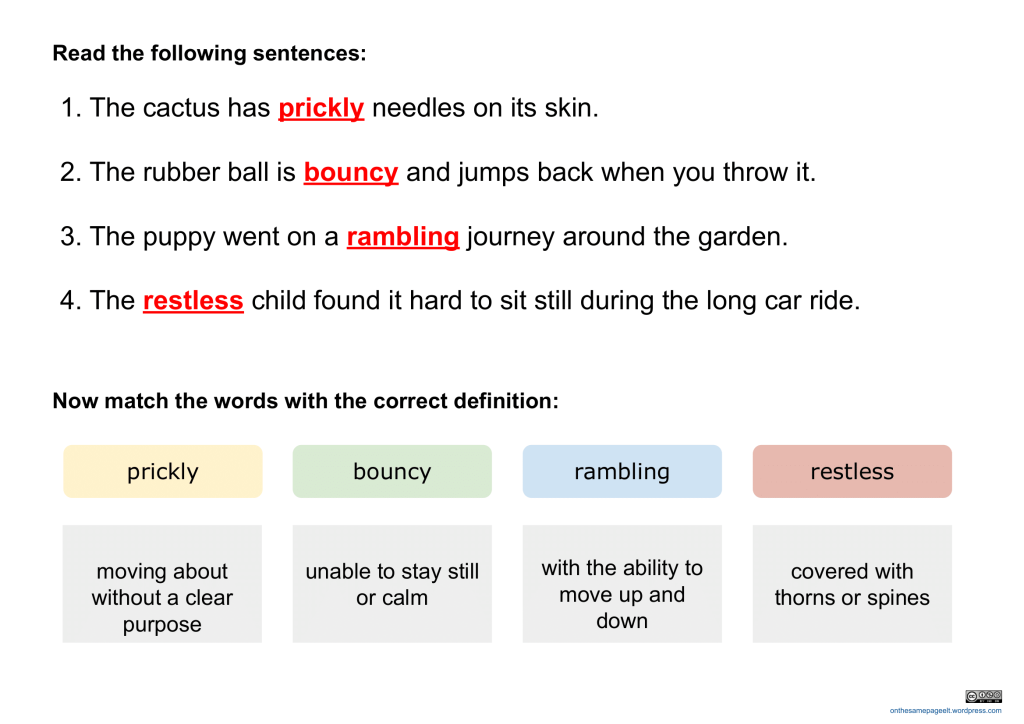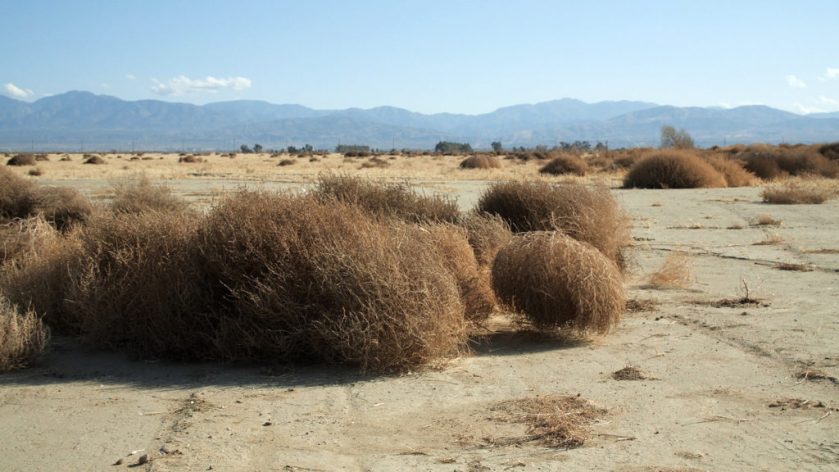Lead-in
1. Have the students read four sentences with the following adjectives: “prickly”, “bouncy”, “rambling” and “restless”. Then ask them to match each adjective to their definition:

2. Explain that today’s lesson is about something that is prickly, bouncy, rambling and restless. Think-Pair-Share: have the students guess what it might be.
3. Confirm or explain that the lesson is about tumbleweeds. If necessary, elicit its meaning. Display pictures or videos of tumbleweeds in action!

Before Listening
4. Ask the students to write down what they know about tumbleweeds under the KNOW column in the K-W-L chart in Activity 1. Share with the whole class. Then ask them to think of anything they would like to know more about and to write a few questions under the WANT TO KNOW column.

5. Before watching a video about tumbleweeds, check if the students can label the different parts of a plant (these terms will be used in the video). Provide any words if necessary.
Listening
6. The students watch “Why do tumbleweeds tumble?” till 1:45:
As they watch, the students complete the line in Activity 3, “From seedling to dead tumbleweed”, writing down what happens at each time of the year during this process. Play again if necessary. Check with the whole group.
7. The students watch the rest of the video and complete the LEARNT column of the K-W-L chart with at least 5 new things they have learnt. Have all their previous questions been answered?
Writing
8. Explain that Alex is a teenager who woke up one day only to find that his house had been invaded by tumbleweeds! Have the students chat to Alex here, a chatbot that will provide details about what happened, how he managed to solve it, or how he felt.
To guide the students, encourage them to follow the grid in Activity 4 and write down the key information. Invite the students to add three questions of their own, too.

9. Alex will provide different information for each student, so before comparing what Alex has told each of them, you may want to have them write a short report or a first person narrative and put all the information together. (I personally had them practise reported speech structures and had the students write a reported account of their conversation with the chatbot!). Finally, compare and discuss the different stories that Alex may have come up with and how they might differ.
Speaking
10. Use these cards with different situations for alternative endings to the tumbleweed invasion at Alex’s, and have groups of students role-play the ending, provide a short oral presentation with further details, hold a debate discussing the pros and cons of each of them, or even have them persuade the rest of the class that their option is the best one (and then vote!).




3 thoughts on “The tumbleweed invasion”